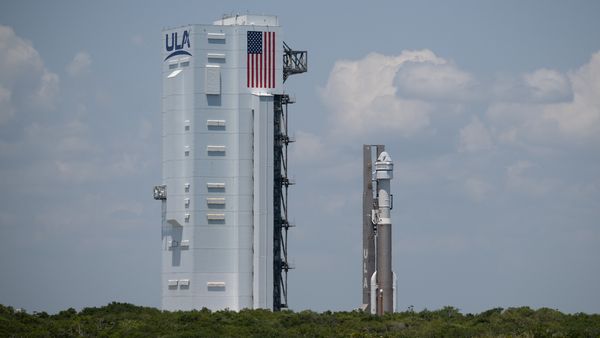
Although Anthony Albanese’s early stumble on Monday heavily influenced media coverage, the Coalition hasn’t had it all its own way, according to the latest campaign insights data from Isentia.
Unsurprisingly, Scott Morrison’s actual calling of the election — with the media providing inordinate coverage of the ritual of the nation’s elected leader travelling to the Queen’s representative to seek permission to hold an election — dominated political coverage. Albanese’s stumbles on the unemployment rate and interest rates were the third-biggest issue in terms of volume of media coverage, after cost of living and inflation.
Morrison’s wrestle with the NSW branch of his own party and the various legal actions associated with it was fourth. Thereafter several issues that all favour Labor: aged care, childcare, climate change and the Morrison government’s reported shocking half-million-dollar payout to Alan Tudge’s former staffer Rachelle Miller, despite insisting Tudge did nothing wrong and will return to cabinet.
Isentia also noted that although by no means dominant, Morrison’s 1.3 million jobs pledge received a high volume of uncritical coverage — despite being easily demolished by genuinely independent journalists.
Again unsurprisingly, Morrison and Albanese dominate media coverage, though the prime minister had more than twice the volume of mentions (positive and negative) as the opposition leader, especially online. Everyone else was a footnote — but along the names earning some mentions were Clive Palmer, Tudge, Andrew Constance and Barnaby Joyce. Labor’s Treasury spokesman Jim Chalmers has had an unexpectedly obscure start to the campaign, coming in below housing and regions spokesman Jason Clare. Clare is part of the ALP campaign HQ team.
The PM’s decision to start his campaign in the Labor marginal of Gilmore helped elevate Constance to a dominant position in coverage in that seat over Labor’s Fiona Phillips. In Braddon in Tasmania, however, Labor’s challenger Chris Lynch substantially boosted his media coverage against the Liberals’ Gavin Pearce. In Bass, Labor’s Ross Hart dramatically picked up his media game against Bridget Archer on the back of Albanese’s visit — who three days later was getting her own boost from Morrison, though she found herself in the middle of intensive questioning about Morrison’s broken promise of a federal ICAC.
In Eden-Monaro, Labor’s Kristy McBain blitzed her opponent in coverage, making grant announcements in the coastal town of Narooma. For North Sydney, mentions of Trent Zimmerman still dominate, although positive mentions of independent opponent Kylea Tink lifted.
In terms of the emotional pulse of social media, sadness and disgust were both higher than long-term averages, particularly sadness, in part a response to Labor’s refusal to consider an increase in JobSeeker.
Isentia also has a fascinating metric on the proportion of time the parties devote to speaking about their own policies versus attacking their opponents. On that score, Albanese and Chalmers have so far been more positive, talking about their policies 57% of the time, compared with 46% for Morrison and Josh Frydenberg.
There are also some highly revealing metrics about what the different media organisations cover in terms of topic selection. The ABC dominated coverage of major issues, with underemployment, the Rachelle Miller payout, and the NSW Liberal court action receiving more extensive treatment than in other outlets, while issues like cost of living and petrol prices and the PM’s visit to Gilmore received proportionately less coverage than elsewhere.
In contrast, in News Corp’s coverage climate change was overrepresented compared with other outlets (as always, from a denialist perspective), as were petrol prices and Medicare, and it paid less attention to the NSW Liberal stoush or Morrison’s jobs pledge than other media groups.
Nine paid proportionately less attention to the Miller payout compared with others, but gave more attention to Morrison in Gilmore (and the poor history between Constance and Morrison over the Black Summer bushfires), but also focused on cost of living and petrol prices. In regional media, Prime Media — now owned by Seven — went hard on Albanese’s stumble, but gave little time to the Miller payout and almost completely ignored climate change. ACM outlets went hard on petrol prices, Medicare and climate change, but gave comparatively less attention to Albanese’s gaffe or aged care.
Isentia also analysed the nature of the coverage. It found that the ABC examined more nuanced and complex topics — such as underemployment this week — while commercial media were more likely to focus on cost of living or scandals and gaffes.
But where the ABC doesn’t stand out is in relation to climate change. It does not talk about climate change more than other media outlets. Indeed, it is News Corp that’s obsessed with talking about climate change, not the ABC, even as its commentators attack the ABC for paying too much attention to the issue.







